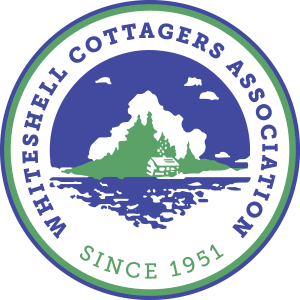The political and economic conditions prevalent in Manitoba in 1951 would have discouraged all but the strongest and most dedicated group of cottagers from attempting to form an organization devoted to bringing electrical power into the Whiteshell Provincial Park.
At the time, the government of the day was faced with tremendous expenditures associated with the disastrous flood in 1950, when the Red and Assiniboine Rivers overflowed creating a lake out of the Red River Valley from Netley to Emerson.
It was difficult to believe that the Manitoba Government would be prepared to spend an appreciable amount of money to develop the Whiteshell Park for cottagers, campers and commercial operators. It was a great challenge and was described at that time to dream the impossible dream.
The one favourable aspect was that the government had developed a program to supply electrical power to rural communities throughout the province. Maybe, just maybe they could be persuaded to extend this into the Whiteshell Provincial Park. After all, the rural electrification program was nearing completion. This apparently was what inspired Art Ans, Harold Brett, Sid Martin, Henry Milbrandt, Bill Morrow and Ken Hellier to call a meeting on September 2, 1951 at Brereton Lake. The result was the founding of the Whiteshell District Association.
The Park was at the time only accessible by Highway #1 which was a two lane hard surfaced road leading east from Winnipeg via Lockport, Beausejour, and Whitemouth. It entered the Whiteshell east of Rennie and then crossed the Ontario boundary three miles east of West Hawk Lake, continuing thirty-five more miles to Kenora.
There was also an entrance to the northern area of the Whiteshell from a point on the Highway #1, approximately five miles west of Whitemouth where a gravel road led to the power development at Seven Sisters. The road continued through the Park past the lakes along the Winnipeg River up to the Rennie River. Later, with the erection of a bridge over the Rennie River, it was joined to Highway #1, south of Brereton Lake, just west of Rennie. The road was then described as extremely dusty and washboard. Incessant Spring rains and floods resulted in washouts and mud holes making entrance to cottages and resorts difficult at the best of times and almost impossible at others.
The Forest Service had cleared and established narrow roads or trails on the perimeters of the developing areas and from lake to lake in some places. Our records indicate that in 1951 there were fewer than 700 cottages in the Park, the occupants of which braved these challenging by-ways. Only the hardy adventurer would not be discouraged from traveling on these roads for pleasure purposes.
But this was not all. There was no telephone service and power lines were non-existent. As a result, to communicate with the rest of the world, a cottager was required to drive to Kenora, Whitemouth or to the power plant at Seven Sisters to make a phone call. Yes, those were the good old days!
Only a few cottagers and camp owners (as they were referred to at the time) had installed generating plants for electricity. The majority of the cottagers had coal oil or gasoline lamps and lanterns and wood burning stoves that were a source of heat and used for cooking. Iceboxes were used in the summer to keep food from spoiling and blocks of ice were usually purchased from a camp owner who had the proper facilities for storing ice.
Nevertheless, even though faced with adversity, the founders of our Association were not deterred. They tackled the problem of electricity, roads, water supply and lake levels that can now be handled on a collective basis. With the formative stages of the Association completed it was now time to press for the much-needed improvements.
To the sixty cottagers at the founding meeting the most important issue was to defray the Associations expenses. They determined that the only pressing need was for postage and stationary and that a nominal fee of one dollar per member would be sufficient to cover the cost. They immediately began to work on the issue of electrical power. By the late 1950s the Association had accomplished the main purpose for which it was formed and had negotiated bringing electricity to most cottage areas in the Whiteshell at an affordable price.
An incident worth mentioning that was taken from the files of Association Secretary Mr. Brett in 1964. He conveyed that upon approaching a woman for her two-dollar membership fee, her response was “We don’t have to pay that anymore, we got the electricity in last year”. Unfortunately, she failed to realize that there still were other issues of importance, as has been the case for all subsequent years.
The Association’s first President, Mr. Milbrant sent the following letter on September 15, 1951 to all cottagers requesting that they join the Association. He wrote as follows:
“There are now approximately seven hundred summer residents in the Whiteshell. In ten years there may be two thousand or more. It seems imperative that we should at this time, commence the building of an organization which may through its spokesmen, add to our holiday enjoyment in future years.”
Mr. Milbrandt was able to accurately predict the future. By 1962 the number of cottage owners in the Park had grown to 2,870. Each year brought new challenges. Throughout the years Cottagers concerns kept increasing and kept the Association’s officers busy.
One constant which remains unchanged since 1951 is that the Association continues to operate as a volunteer, non-profit organization to ensure that we are all able to enjoy our lakeside lifestyle. It is most essential that we continue in our efforts so that we and future generations will not only be able enjoy the park but continue to be able to maintain reasonable lease and service fees.
